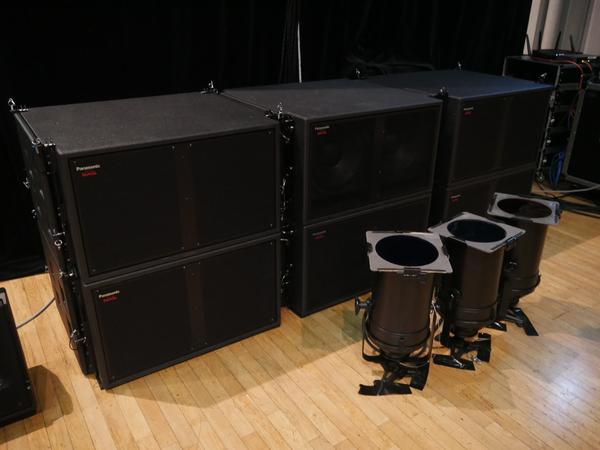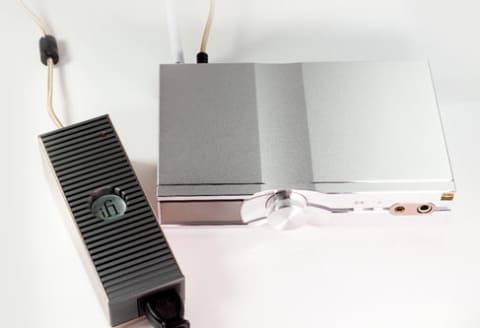Panasonic's professional sound system "RAMSA" celebrated its 40th anniversary since its release in 1979.
RAMSA, which has a track record of many installations as a sound system for concert halls, event venues, stadiums, etc., always aims to create sound that is faithful to the original sound, and to enhance the excitement of concerts and sports. I underpinned the performance. Its track record is backed by the fact that it has been adopted for the past 11 Olympic Games, and attention is also focused on its adoption at the Tokyo Olympics and Paralympics to be held in 2020.
I tried to follow what kind of product Panasonic's RAMSA is.
Panasonic's RAMSA was born on August 4, 1979. At that time, the rock festival “Japan Jam” was held in Enoshima, Kanagawa Prefecture.
It was a time when outdoor festivals were still uncommon in Japan, but the Beach Boys and other big international bands participated in this rock festival, which was attended by tens of thousands of people. From Japan, in the second year since their debut, the Southern All Stars, who had a hit with "Ito no Ellie", appeared and became a hot topic.
"Originally, Panasonic had accumulated know-how related to sound technology since before the war, such as radios and loudspeakers. It's RAMSA," says Hitoshi Iwaizumi, Sound Manager, AV Solution Section, Media Entertainment Promotion Department, Panasonic System Solutions Japan Marketing Center.
At the venue of the Japan Jam, large RAMSA brand speakers were piled up in many stages, creating excitement in the venue. RAMSA made a spectacular debut.
RAMSA at that time was still analog audio, but after that, along with digitization, global expansion began. Furthermore, along with the adoption of the current line array system, it has evolved through the adoption of high-definition that covers up to high sampling frequencies and the adoption of optical transmission. Currently, while focusing on system integration, RAMSA has continued to pursue the goal of "Sound Reality & I am trying to do.
By the way, RAMSA is an acronym for "Research of Advanced Music Sound and Acoustic", which means the search for advanced music sounds and equipment.
“RAMSA is most particular about achieving sound quality that is faithful to the original sound. It is also necessary to enjoy the performance with the best acoustics.In addition, for the artist, performing with a good sound raises the voltage.RAMSA's role is to shorten the distance between the stage and the audience and provide a sound that creates a sense of unity. Yes,” says Iwaizumi.
RAMSA is an analog circuit design technology that is resistant to noise even in poor environments, a technology that enhances sound quality by correcting frequency characteristics with an FIR filter by digital calculation, and an ideal line that captures the sound from the entrance to the exit. By combining speaker directivity control technology that realizes the sound source, we aim to reliably capture the sound on the stage and deliver it to all the audience seats as it is. It is characterized by being able to solve the problem as a whole,” says Iwaizumi.
Another major feature of RAMSA is its durability.
"Durability that can be used in harsh environments is an essential element for professional audio. Panasonic has a big advantage in that regard," said Mr. Iwaizumi.
The fact that it has been used as an audio system for the Olympic Games for many years proves it.

RAMSA was adopted from the 1998 Nagano Winter Olympics, and has been adopted in 11 Olympic Games, including Sydney, Salt Lake, Athens, Turin, Beijing, Vancouver, London, Sochi, Rio de Janeiro, and Pyeongchang.
“While the temperature can reach 40 degrees Celsius during the summer competition, it is used in an environment of minus 20 degrees Celsius during the winter competition. Mr. Iwaizumi laughs, but continues, "Because of this experience, we were able to innovate in terms of durability and reliability."
At the Nagano Winter Olympics, 68 events in 7 sports were held, and at almost all venues, RAMSA brand all-weather speakers developed for the Olympics were in operation. It has demonstrated its capabilities even under extreme conditions.
At the 2008 Beijing Olympics, 284 sound systems were used at 41 venues. Using specially designed speakers to deliver high-quality sound to every corner of a large stadium, the powerful sound contributed to the excitement and excitement of the tournament.
And at the 2018 Pyeongchang Winter Olympics, we adopted a newly developed 3rd generation line array speaker that can withstand the severe cold. Ski jumping, snowboarding, alpine skiing, and Gangneung Olympic Park 4 venues were heated up.
RAMSA, which celebrated its 40th anniversary, newly introduced the acoustic simulation software "PASD (Panasonic Acoustic Simulation Designer)".
As PASD is called "acoustic space control technology", it can support not only the design and simulation required to control the acoustic space, but also the sound adjustment.
"Even if we performed simulations in advance to adjust the acoustics at the site, there were many cases where the acoustic measurement results at the site did not match, and there was a problem that it took time to make adjustments at the site. Depending on the venue. In , the time available for sound adjustment was limited, and the artist could not rehearse until the sound adjustment was completed, so the sound adjustment had to be done in a shorter time. By using , the accuracy of the pre-simulation can be improved and the on-site acoustic measurement results can be matched with high accuracy.The time for acoustic adjustment can be reduced by up to 1/4, and the data collected on-site There is no need to bring back the model and run the simulation again.” (Kuniaki Osawa, Product Design Section 6, Product Design Department, Technology Center, Media Entertainment Division, Panasonic Connected Solutions Company).
In the past, a lot of time was spent on on-site adjustment work, but by increasing the accuracy of pre-simulation, on-site adjustment work can be minimized.
PASD conducts pre-simulations using two pieces of software: PaLAC (Panasonic Line Array Calculator), which examines line array speaker configurations, and AcSim (Acoustic Simulator) II, which examines cluster placement. , the software "AutoFIR (Automatic FIR filter adjuster)" for acoustic measurement and acoustic adjustment will be used to make fine adjustments on site.
Specifically, at PaLAC, we input two-dimensional spatial information such as halls, and based on that, we considered the placement of the array speakers. After deriving the optimum number of speakers and installation angles, we examined the construction specifications, conducted acoustic analysis, and calculated the filter coefficients. Send parameter information to the DSP amplifier. Also, AcSim analyzes the sound pressure level distribution by inputting three-dimensional spatial data and inputting the area to be analyzed and the location information of the speakers. Simulates to produce sound that is easy to hear without any difference in any place. At the site, based on the information obtained using a dedicated measurement microphone, AutoFIR is used to measure and adjust the sound. And PASD with AutoFIR can be operated on mobile PCs such as Let's Note.
In addition, PASD is provided free of charge to attendees of seminars held by Panasonic System Solutions Japan at bases nationwide.
"A single piece of data can handle everything from simulations to on-site sound adjustments. Sound designers can use PASD to build sound systems and increase the satisfaction of PA operators, artists, and audiences." (Mr. Osawa) ).
In the future, it will also support target characteristic settings that adjust according to the preferences of artists and others. In the future, further evolution is expected through the use of AI.
The many years of performance at the Olympics and the many concerts and events on-site have supported the evolution of RAMSA for 40 years. And a new proposal that brings together those know-how is acoustic space control by PASD.
RAMSA, which has continued to evolve for 40 years as the hidden protagonist of the Olympic Games, concerts, and event venues, is likely to further change the world of professional audio while incorporating new technologies.




